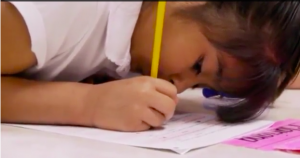The current relationship between charter and public schools is one fraught with inequity and inequality. Although, in their inception, charter schools and public schools were intended to work in tandem and with competitive spirits to challenge the structural problems facing students and educators and work both public and private funds to find a solution. And yet, intentions aside, the current system that charters exist in today is both indirectly and directly damaging to education overall. Specifically, the newfound reliance and measures to emphasize testing in public school curriculum has only worked to intensify the divide and damage between charter and public schools. Both Sarah Mondale’s film Backpack Full of Cash and Kevin Welner’s article “The Dirty Dozen: How Charter Schools Influence Student Enrollment” corroborate these claims and illustrate examples of the inequity between charter and public schools.

A key scene in Mondale’s film is when Jennifer Eilender, a 3rd grade teacher in Tennessee, speaks directly into the camera and says that administrators in her district tell the teachers “if it’s not tested, don’t teach it” (Mondale 53:29). This rhetoric exemplifies how much of an impact testing has on the educational system. Throughout the film, but stemming from this crucial and poignant scene, it becomes clear that the push towards testing in public schools has implications for financial resources provided to public versus charter schools.
Constantly testing students costs money. For example, over a period of 5-8 years, the Tennessee public schools paid $183 million for standardized testing alone (Mondale 53:18). As testing becomes more of a widespread practice after Bush’s The No Child Left Behind Act in 2001 and Obama’s The Every Student Succeeds Act in 2015, public schools are forced to spend more and more money on the standardized tests.
Heightening this financial predicament, the emergence of charter schools is another revenue stream taken away from education in public schools. The public money that funds charter schools is the same money that funds public ones, so as more charter schools are created in a district, the more money is taken away from the public education. For example, the Philadelphia school district paid $700 million to charter schools in the state (Mondale 40:10). The potential of charter schools to “inject greater competition with public schools” has had distorted consequences that stray far from the original intention of the economic boost (Welner 10). Because charters are privately run, they have no incentives or regulations about testing and therefore do not have to pay for that cost. Clearly, there is an inequitable divide in the spending requirements between charter and public schools.